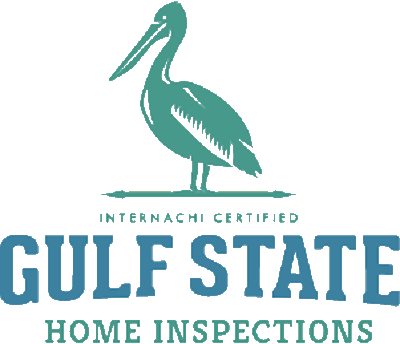When living in areas prone to hurricanes, strong winds, or tropical storms, protecting your home from the destructive forces of nature is crucial. A wind mitigation inspection is a specialized assessment that evaluates a home’s ability to withstand high winds. This inspection is particularly important for homeowners in coastal or hurricane-prone regions, as it can identify features that make a home more resilient and may lead to insurance savings.
But what exactly is a wind mitigation inspection, and how does the process work? Let’s explore what happens during a wind mitigation inspection and why it matters for your home’s safety and your wallet.
What Is a Wind Mitigation Inspection?
A wind mitigation inspection assesses how well a home is equipped to handle the damaging effects of high winds and hurricanes. Inspectors look for specific features that help a house resist wind damage, such as reinforced roofs, impact-resistant windows, and other structural elements. The goal is to identify how much protection your home offers against severe weather conditions and whether improvements could make it safer.
In many cases, homeowners who have wind mitigation features in place are eligible for discounts on their homeowners’ insurance premiums. Insurance companies often offer these discounts because homes that are better protected against wind damage are less likely to suffer catastrophic losses during storms.
The Wind Mitigation Inspection Process
Wind mitigation inspections are straightforward but thorough, focusing on critical components of your home’s construction that affect its wind resistance. Here’s a step-by-step breakdown of the typical inspection process:
1. Roof Condition and Shape
One of the first things an inspector looks at is the condition and shape of the roof. A well-maintained roof with wind-resistant features can significantly reduce the risk of damage in high winds. Inspectors will evaluate:
- Roof Material: The type of roofing material plays a major role in wind resistance. Metal, tile, and certain types of shingles are more durable and better equipped to withstand high winds.
- Roof Age: Older roofs are more vulnerable to wind damage. Inspectors will note the age of the roof and its overall condition.
- Roof Shape: Roofs with a hip shape (sloped on all four sides) are more aerodynamic and tend to fare better in strong winds compared to gable roofs, which have flat vertical sides.
2. Roof Deck Attachment
The way the roof deck is attached to the home’s structure is critical for wind resistance. Inspectors will check how well the roof sheathing (the plywood or OSB under the shingles) is fastened to the roof trusses or rafters. Stronger attachments, such as nails or screws spaced closely together, provide better wind resistance.
3. Roof-to-Wall Connections
A key part of the inspection is assessing how the roof is connected to the walls of the house. Proper roof-to-wall connections help ensure that the roof remains attached during high winds. Inspectors will look for features like hurricane clips or straps, which securely fasten the roof to the structure of the house, reducing the likelihood of roof uplift.
4. Impact-Resistant Windows and Doors
Windows and doors are vulnerable entry points during a storm. The inspector will check if your home has impact-resistant windows or storm shutters. These features are designed to withstand windborne debris and can prevent catastrophic damage during hurricanes. Similarly, reinforced doors or garage doors are essential for preventing structural failure in high winds.
5. Secondary Water Resistance
In the event that shingles or roof coverings are torn off, a secondary water resistance barrier (such as a waterproof membrane) can help prevent water from entering the home. This layer is critical in keeping the structure dry and minimizing water damage, even if the outer roofing materials are compromised during a storm.
6. Attic Ventilation and Gable End Bracing
The inspector will check the attic space for proper ventilation and bracing. Gable end bracing strengthens the ends of the house, providing extra protection during strong winds. Properly secured attic vents can also help reduce pressure during a storm, which can keep your roof intact.
7. Shutters and Other Storm Protection Features
Additional storm protection features, such as shutters or wind-rated garage doors, are also inspected. Homes with hurricane shutters or storm panels installed over windows and doors can better resist wind pressures and flying debris during a hurricane.
Why Wind Mitigation Inspections Matter
A wind mitigation inspection is a proactive way to assess your home’s wind resistance and make any necessary improvements. It offers several key benefits:
- Increased Safety: Identifying weaknesses in your home’s wind resistance allows you to address them before severe weather hits, helping protect your family and property.
- Insurance Discounts: Many insurance companies offer premium discounts for homes with documented wind mitigation features. The inspection report serves as proof that your home has these wind-resistant elements, which could save you significant money on insurance.
- Reduced Risk of Damage: Strengthening your home’s structure against wind damage can help reduce repair costs after a storm and minimize the potential for severe damage.
- Higher Property Value: Homes with wind mitigation features are often more attractive to buyers, especially in hurricane-prone regions. These features can increase your home’s value and appeal.
Conclusion
The wind mitigation inspection process is an essential step for homeowners in regions susceptible to hurricanes and strong winds. By evaluating the key components of your home’s structure and identifying features that can withstand high winds, this inspection helps ensure your home is better prepared for severe weather. Not only does it provide peace of mind, but it can also lead to substantial insurance savings and increase the overall value of your home.


